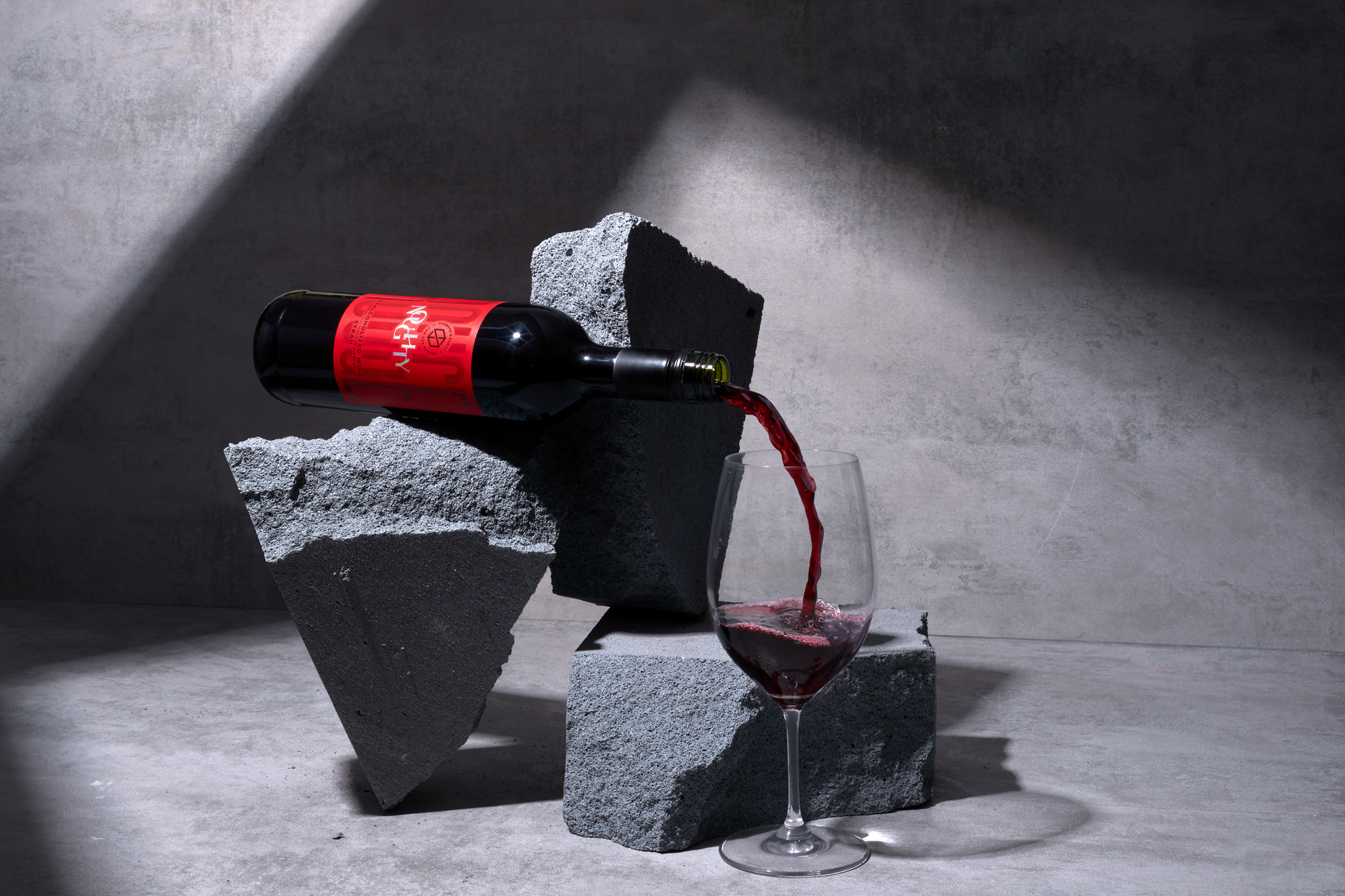Whether you’re sipping with a significant other, cooking for one, or indulging in Galentine’s day, or having a full-blown dinner party for loved ones, you’re in for a real treat when it comes to non-alcoholic rosé. We’re going to share our favorite food pink pairings––from basic appetizers for those guilt-free happy hours to full-fledged meals for intimate dinner dates.
While it’s pretty, pink, and easy on the palate, it can be difficult to intuitively know how to pair non-alcoholic rosé in a way that truly flatters food. Before we indulge in the pairings themselves—we’ve listed out a few characteristics to look for before you begin cooking.
Cuisine Characteristics to Pair with Non-Alcoholic Rosé
Naturally, in our search for the perfect partnership, we’re on a mission to assess compatibility before indulging. As it turns out, certain foods are better suited to rosé than others. When you think of alcohol-free rosé wine, you may be envisioning a pale pink or light red hue, which gives way to a pleasantly fruity, floral aromatic note on the nose.
This light-bodied pour tastes exactly as it smells—with hints of strawberry, raspberry, and of course, grapes. It’s quite acidic, which creates a crisp, refreshing taste. We love it year-round, but it’s especially delightful in the summer. Because it has low tannins, it’s an easy drink: you won’t experience that dry, puckering mouthfeel.
These delicate characteristics can be easily overwhelmed by strong, spicy flavors. They are, however, the perfect flavor profile to pair with more mellow bites.
Flattering Food Characteristics
We’ve rounded up a few things to look for when you’re looking to enjoy rosé and fine fare together.
- Light-Bodied
- When pairing with alcohol-free rosé wine, the food should be relatively light. Save the heavy pasta dishes and carbs for more full-bodied expressions like Cabernet and Merlot.
- Acidic
- Because rosé is a relatively acidic wine, the foods you pair it with should be, too—think of your favorite lip-puckering bites: tangy or crisp foods like tomatoes, vinaigrettes, and citrus.
- Fruity
- Matching the palate of food and wine can make for a perfect pairing. To align with non-alcoholic rosé, you’ll want some color on the plate. Ideally, you’ll match the specific fruity notes of your glass with the respective fruit in question—for example, floral rosé alongside rose-flavored macarons for dessert. If you want to balance the sweetness of the glass, though, you can opt for some spicy or savory dishes, too.
- Delicate Flavors
- Foods with delicate flavor profiles don’t overwhelm the palate, leaving the feeling of true enjoyment and excitement for the next bite. This balance also creates room for the rosé to be enjoyed as a true component of the meal.
Of course, these recommendations are simply suggestions. If it tastes right to you, it’s worth sipping and sharing.
The Dynamic Duos We Love: Rosé Food Pairings
All hail the ultimate people-pleasing dish alongside one of our most tried-and-true, beloved rosé expressions…
Charcuterie x Giesen Rosé
Cured Meats, Cheeses, Crackers, & More
Charcuterie boards are a fantastic choice for pairing with non-alcoholic rosé wine because they offer a variety of flavors and textures that complement the wine's light body and fruity notes.
The salty, savory flavors of cured meats like prosciutto or salami are balanced out by the sweetness of dried fruit or honey, while the creaminess of cheeses like brie or goat cheese complement the wine’s floral notes. The stone fruit and red fruit flavors of the Giesen Non-Alcoholic Rosé wrap in a crisp, dry finish, making it a bright and lively sip that’s perfectly suited for pre-dinner or happy hour sipping.
When preparing a charcuterie board, aim for a variety of flavors and textures, and consider including some acidic elements like pickles or olives to bring out the wine's acidity. This particular pairing is really fun because the possibilities are seemingly endless!
However, if you’re looking for a simpler approach or a palate cleanser, may we suggest the go-to simple salad with a sparkling counterpart next…
Simple Salad & Kolonne Null Sparkling Rosé
Mixed Greens With Light Vinaigrette Dressing
A light, refreshing salad is another great option for pairing with non-alcoholic rosé wine. The acidity in the dressing complements the wine's acidity, while the sweetness of the dressing balances out the wine's fruitiness. Kolonne Null’s Sparkling Rosé is equally ebullient—pale red berries, plums, and bright acidity make for an excellent apéritif-like sip; it’s perfect for easing into a meal.
In bringing this pairing to life, we suggest you aim for a mix of greens, such as arugula or spinach. This adds a nice layer of complexity to a dish that could otherwise be a bit bland. To take things a step further, consider adding some fruit, like strawberries or mandarin oranges to highlight the wine's fruit notes. To make a simple vinaigrette, whisk together olive oil, white wine vinegar, Dijon mustard, and honey to taste.
When done right, vegetables can steal the show. As it turns out, so can simply made tonic-based drinks.
Grilled Vegetables x Ceder’s Rose Spirit
Zucchini, Bell Peppers, & Eggplant
If you’re looking for another appetizer choice or something to pair with the rest of your meal as a side dish, you can’t go wrong with grilled zucchini, bell peppers, and/or eggplant. Of course, vegetarians can dress up any and all vegetables as the main event! While it’s not a rosé, per se, Ceder’s Rose Spirit has similar notes of rose, hibiscus, and juniper, but is better enjoyed in simple Ceder’s-and-tonic recipes or cocktails. To enjoy a cocktail-like sip instead, try mixing 1 part Ceder’s with 2 parts tonic and garnish with fresh raspberries and mint.
The grilled vegetables offer a light, smoky flavor that balances the soft notes in rosé. Any sweet aspects in the vegetables will speak to the fruit in Ceder’s (which, by the way, is sugar and calorie free)—and the smokiness from the grill adds a savory note that is delightful alongside the tonic. To prepare grilled vegetables, toss sliced vegetables in olive oil, salt, and pepper, and grill over medium-high heat until tender and slightly charred.
Time for the protein, please.
Bites from the Sea x Wölffer Estate Spring in a Bottle
Shrimp, Crab, & Salmon
Now we’re thinking coastal thoughts. While a dark red wine is an obvious choice alongside a rich, robust steak, a lighter variety like rosé creates mouthwatering harmony with lighter seafood, like shrimp, crab, or salmon. Wölffer Estate’s Spring in a Bottle is a timeless non-alcoholic testament to rosé. Its impressive acidity, notable minerality, and long finish make for a crisp, clean pour. The lightness and delicacy of seafood is perfectly suitable for this sophisticated sip—and the Wölffer acidity cuts through the richness in heavier fish.
Aim for light, simple preparations like grilled or poached seafood, and consider adding a citrusy element like lemon or lime to highlight the wine's acidity. Bonus points if you pair this with the simple salad above for the full dining experience.
Italian Fare x Jøyus Non-Alcoholic Rosé
Light Pasta Dishes Like Linguine or Risotto
We love a light pasta dish and the way it satisfies a craving for something hearty without overwhelming the appetite. Emphasis on the light, though…save the lasagna or heavy meatballs for another time…and wine! When it comes to rosé, opt for linguine or risotto.
The Jøyus Rosé boasts a delicate and dry blend with watermelon and ripe peaches on the palate. A bit of fresh herbs adds the perfect green finish to complement a creamier, carb-centered dish. Look for recipes that feature light sauces like pesto or olive oil, and consider adding some fresh herbs like basil or parsley to highlight the wine's herbaceous notes.
Finally—one of our favorite couples of all…
Something Sweet x French Bloom Le Rosé
Rich Chocolate Delights, Fruit Tarts, & Cheesecake
Desserts are so very personal. As far as sweet somethings go, we say, use your imagination…as it’s hard to mess this one up. The fruity and floral notes of non-alcoholic rosé make it a natural companion to dessert trays and final courses. The French Bloom Le Rosé is one of our favorite dessert wines and is a true fine wine variety. Its low sugar content, fine bubbles, and elegant yet lively acidity make it perfect for a richer dessert like cheesecake. The rosé is a delight on its own, but light enough to give your dessert of choice plenty of the limelight.
To really lean into the fruity, fresh, refreshing aspects of the wine at hand, consider going to your local farmer’s market. Pick up a few in-season fruits, throw them together in a homemade cobbler or a pie crust. Enjoy with a bit of chocolate or vanilla ice cream and, of course, a glass of rosé.
Final Love Notes
There is so much to love about alcohol-free rosé—including the way it elevates a dining experience. In summary, stick with lighter dishes that can match the acidity and delicate, fruity flavors of what you’re pairing it with. But if pink wine isn’t your thing, no worries—we have guides to pairing with non-alcoholic Sauvignon Blanc and red expressions, as well as spotlights on Chardonnay, year-round year-round whites, and halal wines, to name a few.
Cheers!



